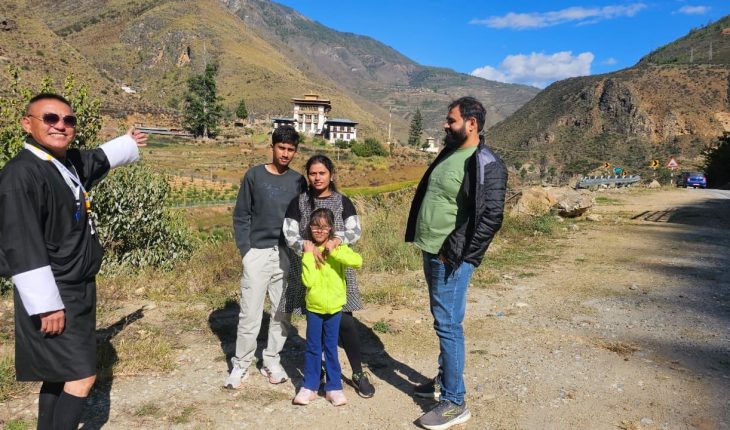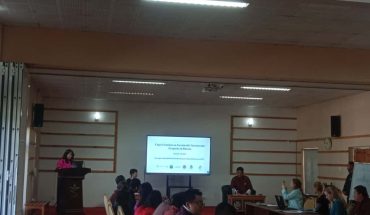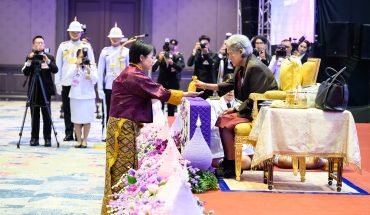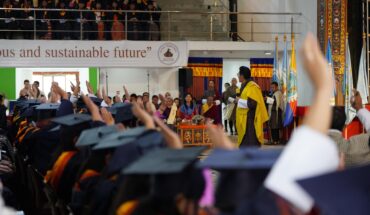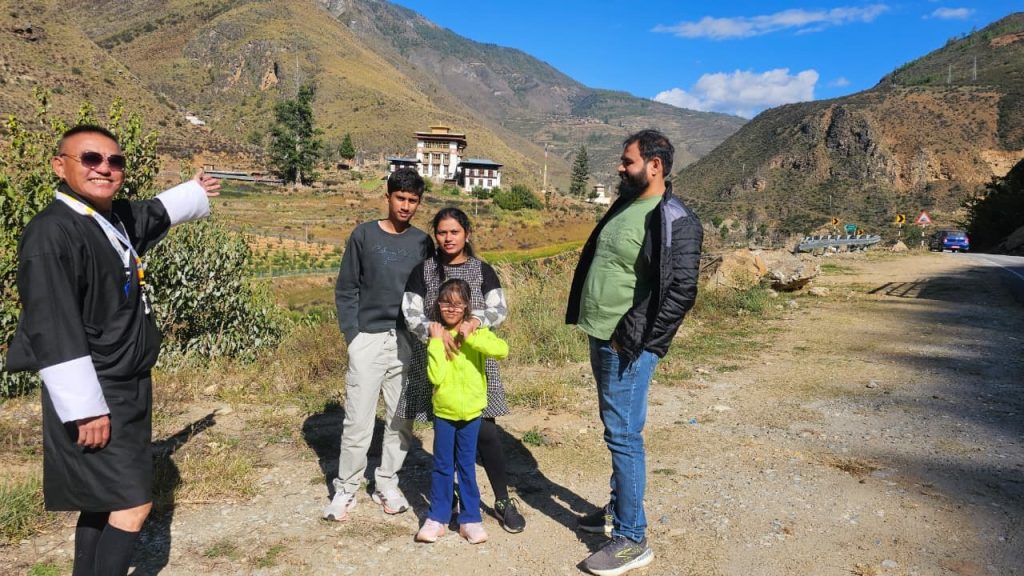
TENZIN LHAKI | Thimphu
The tourism industry is experiencing a strong post-pandemic recovery, with the government intensifying efforts to enhance the quality and professionalism of its guiding services a key pillar of the country’s “high value, low volume” tourism policy.
The Department of Tourism (DoT) has introduced a mandatory competency test for licensed guides to “enhance professionalism, quality, and competency of tour guides,” underscoring the importance of trained and certified professionals in shaping visitor experiences.
Guides, often regarded as the face of Bhutan’s tourism industry, play a central role in how visitors perceive the nation’s culture, nature, and hospitality. Any gap in skills or availability can directly affect visitor satisfaction — a critical consideration in a tourism model that prioritizes fewer but higher-value travelers.
Official data indicate a major rebound in tourist arrivals. Bhutan welcomed 4,851 visitors in July 2025; marking an 85 percent increase compared 2,627 tourists in July 2024 an increase of 2,224 travelers.
Of the total arrivals in July, 3,006 were from India, while 1,845 came from other countries. The top ten international source markets after India were China with 288, the United States with 242, Bangladesh with 165, Thailand with 139, Japan with 101, the Republic of Korea with 91, Singapore with78, Spain with 76, and Australia with 67.
Phuntsholing remained the busiest entry point with 2,418 tourists, followed closely by Paro International Airport with 2,315 arrivals. The other gateways Samdrup Jongkhar with 81, Gelephu with 36, and Nganglam with one recorded smaller but steady numbers.
As of July 2025, Bhutan’s tourism workforce included 2,966 licensed guides comprising 516 cultural guides, 2,406 certified as both cultural and trekking guides, 14 senior guides, and 30 tour leaders. The total number of registered tour operators stood at 2,800, with 189 new operators registered this year, including 24 in July alone.
According to Garab Dorji, Chairman of the Guide Association of Bhutan (GAB), tour guides face multiple challenges linked to tourism volume, market competition, and the post-pandemic adjustment under the “High Value, Low Volume” policy.
He explained that the large number of certified guides over 2,400 validated as of late 2025 creates intense competition, especially during slower periods. “While the minimum DSA (Daily Subsistence Allowance) has been revised and increased, the high number of guides relative to the pre-pandemic tourist volume leads to guides competing for limited work, which can put pressure on their effective income,” he said.
The introduction of online booking and directory portals has increased transparency but also intensified competition. “The launch of an online directory and booking portal facilitates direct comparison and booking, which could intensify competition among individual guides,” said the GAB chairman.
He also noted that high travel costs and policy uncertainty remain ongoing concerns. “Even with the SDF temporarily halved to USD 100 per person per night, the overall high cost of travel including airfares continues to deter a broader segment of international tourists,” he said.
Addressing concerns about whether there are enough active guides to meet growing tourist demand, Garab Dorji stated that Bhutan’s capacity remains strong.
“Well, if we look into our Guide Management System (GMS) database, we can confirm a robust pool of talent. We currently have over 4,700 licensed tourist guides registered and ready for duty,” he said.
“Even with the usual industry factors—such as seasonal employment or a portion of guides pursuing other work, if we conservatively estimate that just one-third of the total licensed population remains consistently active, we are still left with a substantial, highly capable workforce,” he added.
“Therefore, based on these figures, we are confident that we have more than enough qualified tourist guides to effectively meet and cater to the current and projected demands of the tourist influx, ensuring a high-quality experience for all visitors,” said Garab Dorji.
Garab Dorji explained that most guides work as freelancers and rely on seasonal demand. “Tourism is a season-based service industry with most of our tourist guides working as freelancers. Whenever there comes a need from tour operators and other agencies requiring specialized tourist guides such as in foreign languages of Chinese, Japanese, French, German) or other specializations like flora and fauna, fly fishing, mountain biking, or cycling, GAB shares these guides from its database,” he said.
He also addressed concerns about income fluctuations. “If there is a decline in tourists visiting Bhutan, then our tourist guides are certainly affected,” he said.
On the new competency test introduced by the Department of Tourism, Garab Dorji said the initiative aligns with Bhutan’s tourism philosophy. “To uphold Bhutan’s tourism principle of ‘high value’, we also need to be certain that we deliver the highest standard of services and it’s not just the tourist guides alone, it covers all other service providers in the whole tourism fraternity,” he said.
“Well, coming to the guide competency assessment, it is a mechanism or you can call it a tool to identify gaps where further improvement can be made. And it is important because such kind of capacity building will further develop and improve the overall services in the sector,” he added.
Highlighting GAB’s training initiatives, Garab Dorji said: “Among many of our other mandates, the association is very keen in supporting capacity development of our tourist guides. We conduct up scaling trainings and recently we have been providing up gradation training in trekking guide courses. And in coming times we shall conduct more.”
He also emphasized collaboration with the Department of Tourism. “GAB is one among the four important tourism partners working closely with the Department of Tourism. We have carried many tourism activities and programmes with support from the Department of Tourism,” he said.
Regarding income and allowances, Garab Dorji pointed out challenges within the free-market system. “Tourism business is a free-market system with demand and supply chain working in a circle; and price mechanism being one of the most influential,” he said.
“The Daily Subsistence Allowance which our tourist guides get is relatively low against the expenses he or she incurs. For instance, majority of the tourist guides are stationed in Thimphu and if they go out, expenses such as meals, accommodation and other needs have to be accounted for,” he added.
He noted that competition often drives guides to accept lower pay. “Some tourist guides, in fear of not getting a tour, accept low DSA which again is a problem to everybody. Because no matter what DSA structure is set, it is the tour guide and the agent who settle the negotiation at the end of the day,” he said.
“However, there are some seasoned professional tourist guides whose DSA and other perks are pretty good which agents are happy to offer,” he said, adding that building such a profile “takes years of dedication, loyalty, hard work, continuous study and improving your skills.”
Senior guide Yeshi Lethro said Bhutan’s tourism is gradually recovering but still below pre-pandemic levels. “Before COVID-19, visitor numbers were higher, and guides had more consistent work. Today, although arrivals are increasing, the flow remains uneven and more concentrated in peak seasons,” he said.
“The new tourism policy, especially with the revised Sustainable Development Fee (SDF) and emphasis on high-value, low-volume tourism, has brought both benefits and challenges,” he added. “It encourages more meaningful travel experiences, but it has also reduced group sizes and shortened visitor stays.”
He cited fluctuating income, higher costs, and limited training as key challenges. “Continuous professional development and refresher training opportunities are limited, which can make it harder to stay updated with changing tourism trends,” he said.
According to Yeshi Lethro, the SDF has influenced visitor behavior. “Many travelers now opt for shorter trips or visit neighboring countries before or after Bhutan to balance costs,” he said. “While this supports Bhutan’s sustainability goals, it has affected the number of visitors and the duration of their stays.”
He added that guiding remains largely seasonal. “Most work happens during the spring and autumn months when tourist arrivals peak. During lean seasons, many guides take up alternative jobs or training to sustain themselves,” he said.
On the role of technology, he noted: “Technology has made coordination easier in many ways. Online booking systems, digital itineraries, and instant communication with clients have streamlined our work. However, not all guides are equally comfortable with digital tools, so more training is needed.”
“Government agencies could support guides by organizing more regular training, refresher courses, and workshops on communication, sustainability, and digital tools,” he said. “Offering incentives or support schemes during low seasons would also help many guides sustain their livelihood.”
New guide Tashi Minjur said his motivation came from a deep interest in Bhutan’s heritage. “I have always been passionate about Bhutan’s culture, environment, and history,” he said. “It has been a rewarding experience so far, as every tour feels like a chance to learn and grow.”
He explained that preparation and cultural understanding are vital while representing Bhutan effectively. “I make sure to study each itinerary thoroughly and learn as much as I can about the guests’ interests,” he said.
Another young guide, Palden Dhendup, shared similar views on cultural respect. “Before visiting temples or monasteries, I always brief my guests on proper etiquette, such as removing shoes, dressing modestly, and showing respect to monks,” he said.
Both guides highlighted the need for mentorship and regular training. “The Guide Association of Bhutan also organizes workshops and refresher courses that are very helpful for beginners like me,” said Tashi Minjur. “However, more regular mentorship programs from senior guides would be beneficial.”
They said technology has helped streamline their work. “Online permits and e-visas save time, and I can communicate easily with travel agents and clients through digital platforms,” said Palden Dhendup. “However, sometimes technical issues or poor internet connectivity in remote areas can cause small delays.”
Looking ahead, Tashi Minjur said: “I hope to see a more balanced tourism industry where both sustainability and livelihood opportunities for locals improve together. Personally, I hope to become an experienced and respected guide who contributes to promoting Bhutan as a model of responsible tourism.”

